EYES ON THE CANAL
AfD responded to the open call for ideas to rejuvenate one of Chennai ́s most important water body — the Buckingham canal. Built in the British Raj primarily to transport goods from Vijayawada to Madras, the canal today is faced with encroachment and severe pollution woes with untreated sewage and solid waste finding their way in.
The concept proposal explores the correlation of preservation of the canal to the health and welfare of urban dwellers —questioning the invisibility of urban infrastructure systems and advocating the need for awareness of resource use.
‘Eyes on the Canal’ is part of the project “Cities fit for Climate Change”, implemented by GIZ.
The concept proposal explores the correlation of preservation of the canal to the health and welfare of urban dwellers —questioning the invisibility of urban infrastructure systems and advocating the need for awareness of resource use.
‘Eyes on the Canal’ is part of the project “Cities fit for Climate Change”, implemented by GIZ.
Status
Competition entry
Shortlisted + Exhibited
Timeline
July — August 2018
Competition entry
Shortlisted + Exhibited
Timeline
July — August 2018
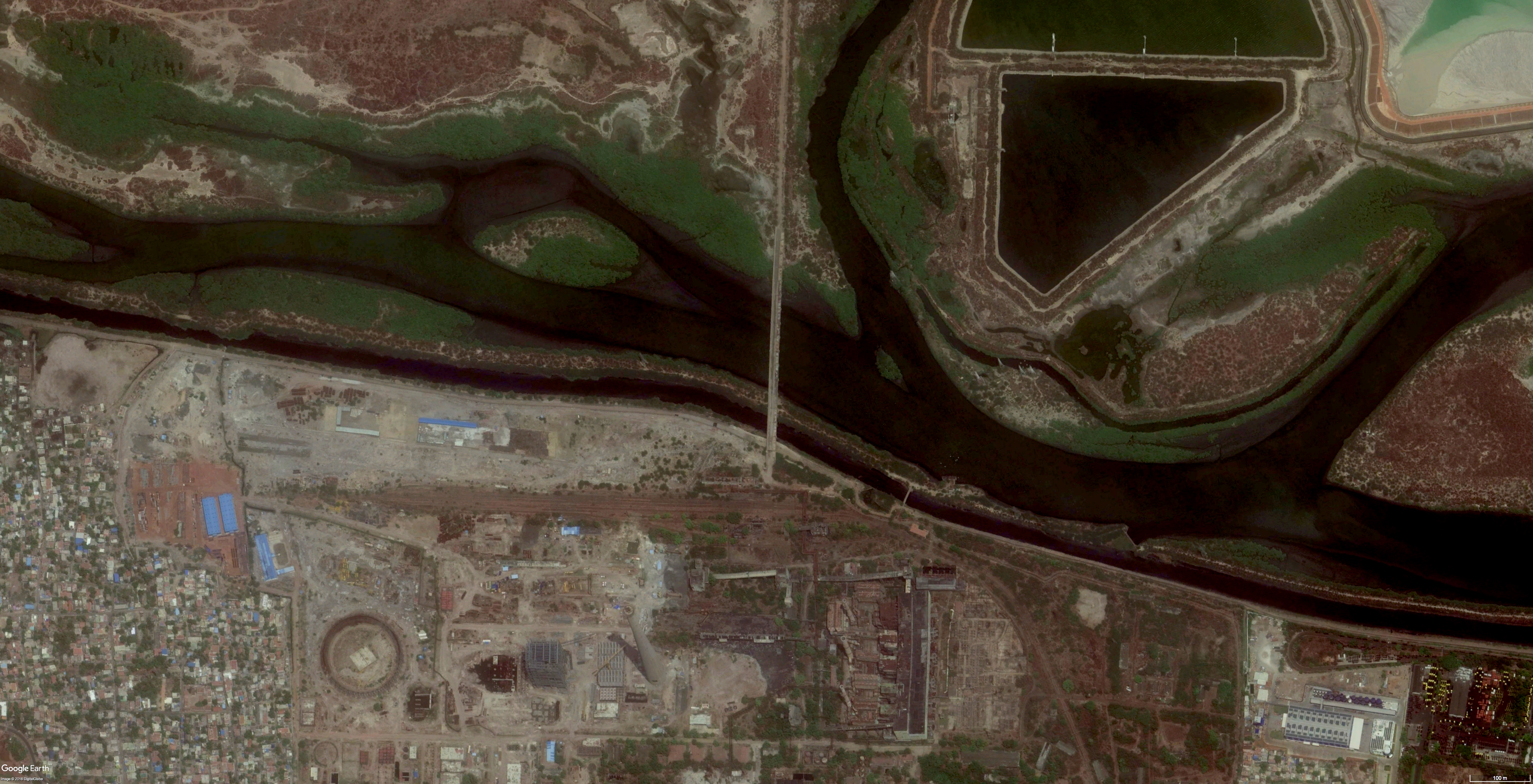

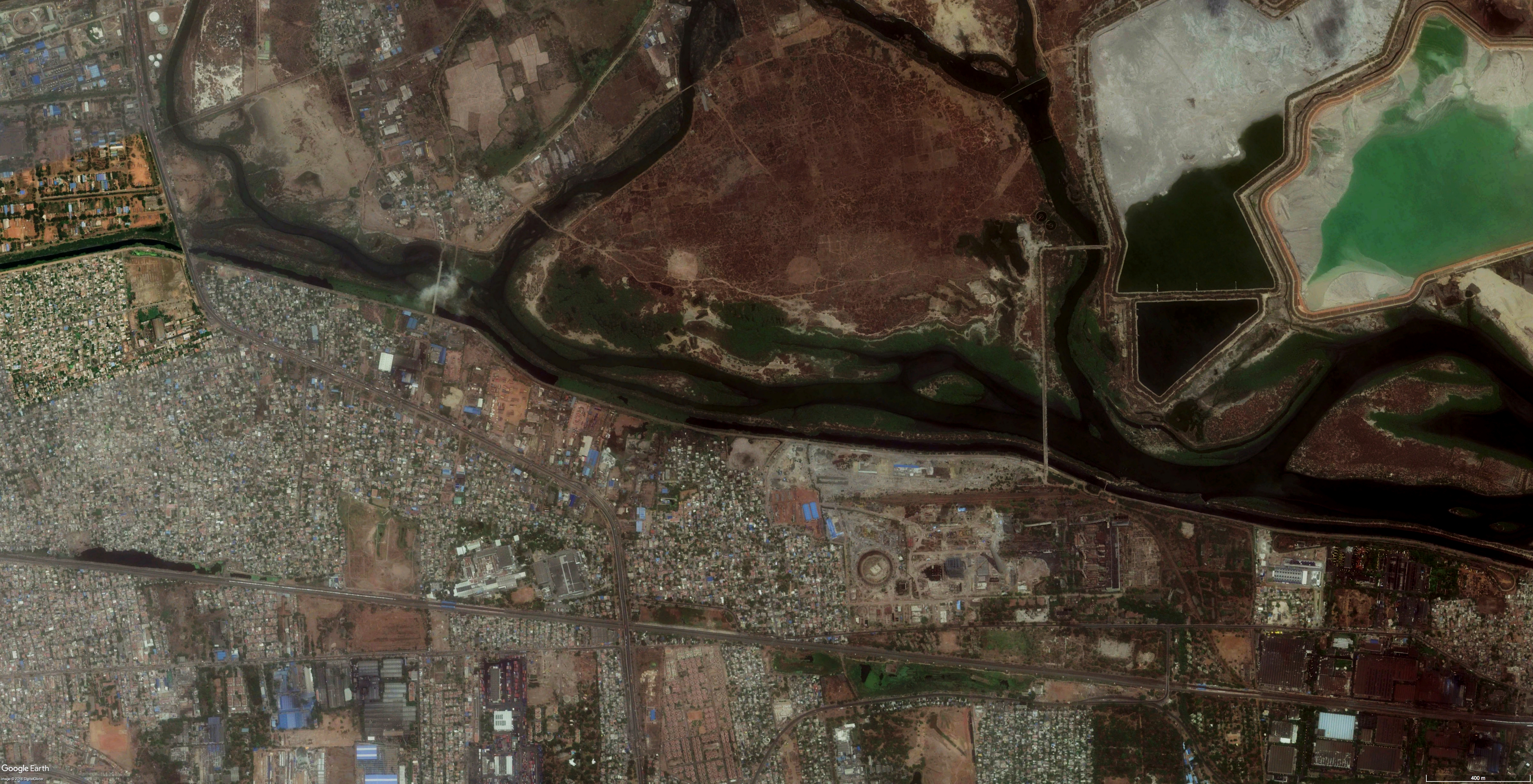

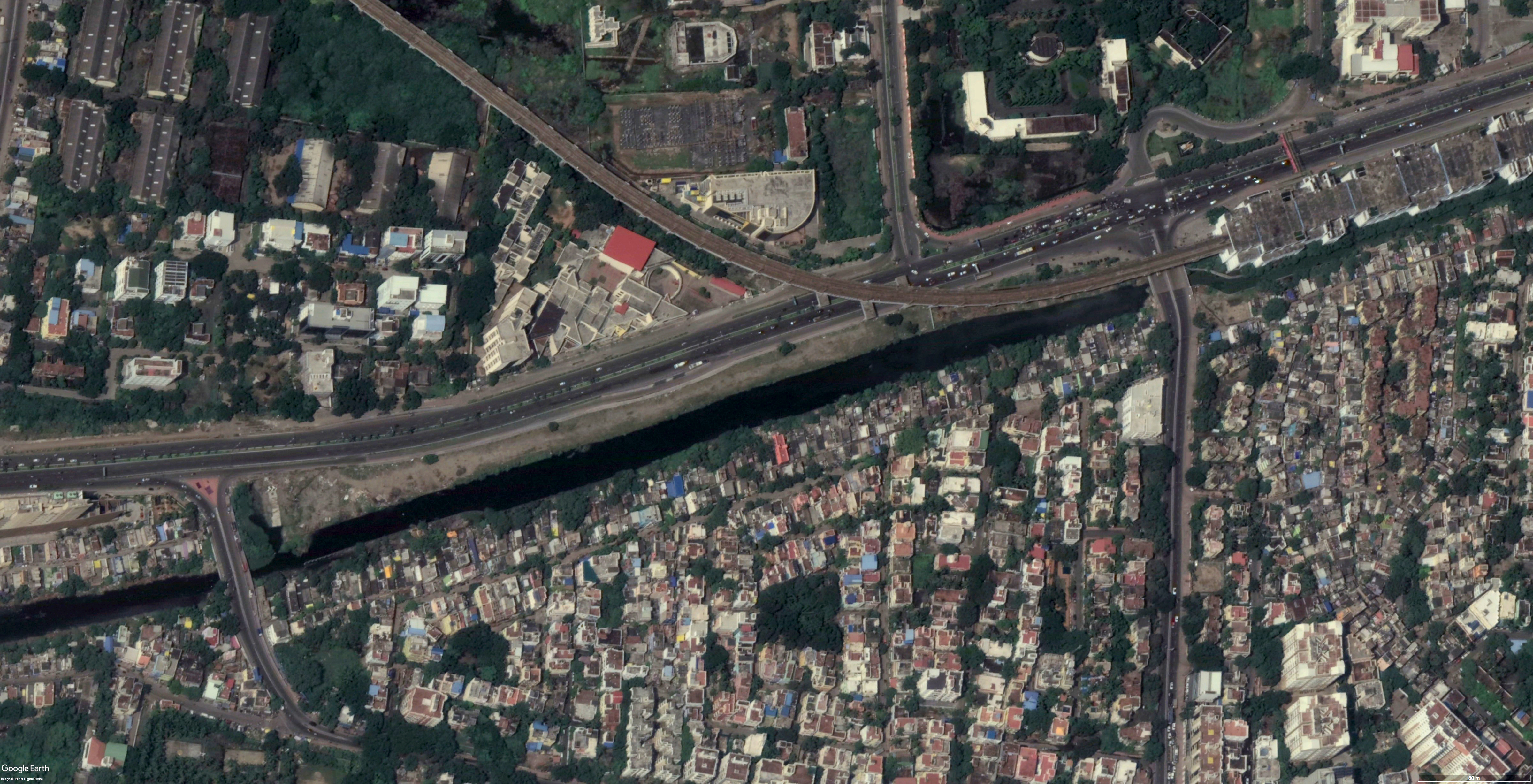
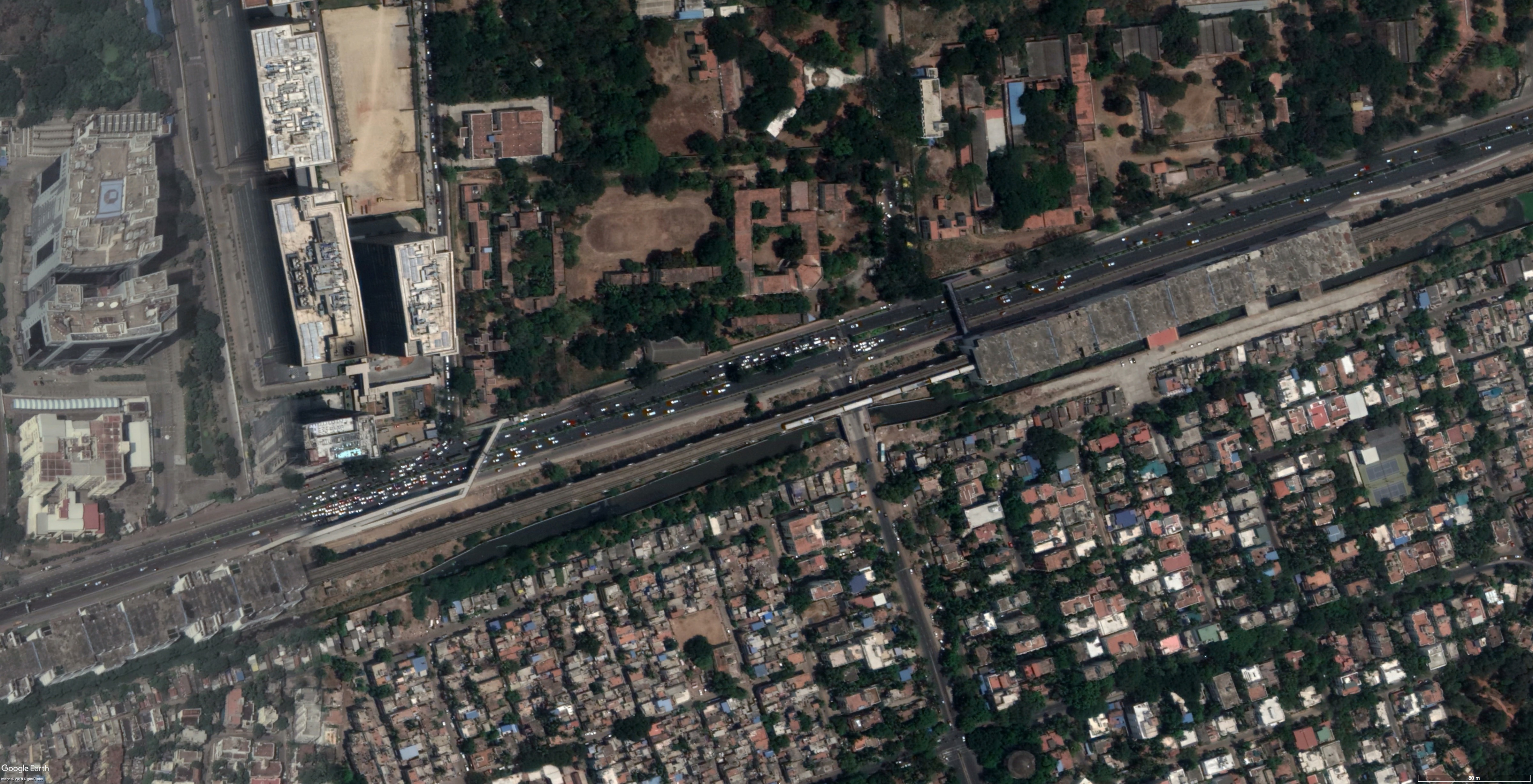
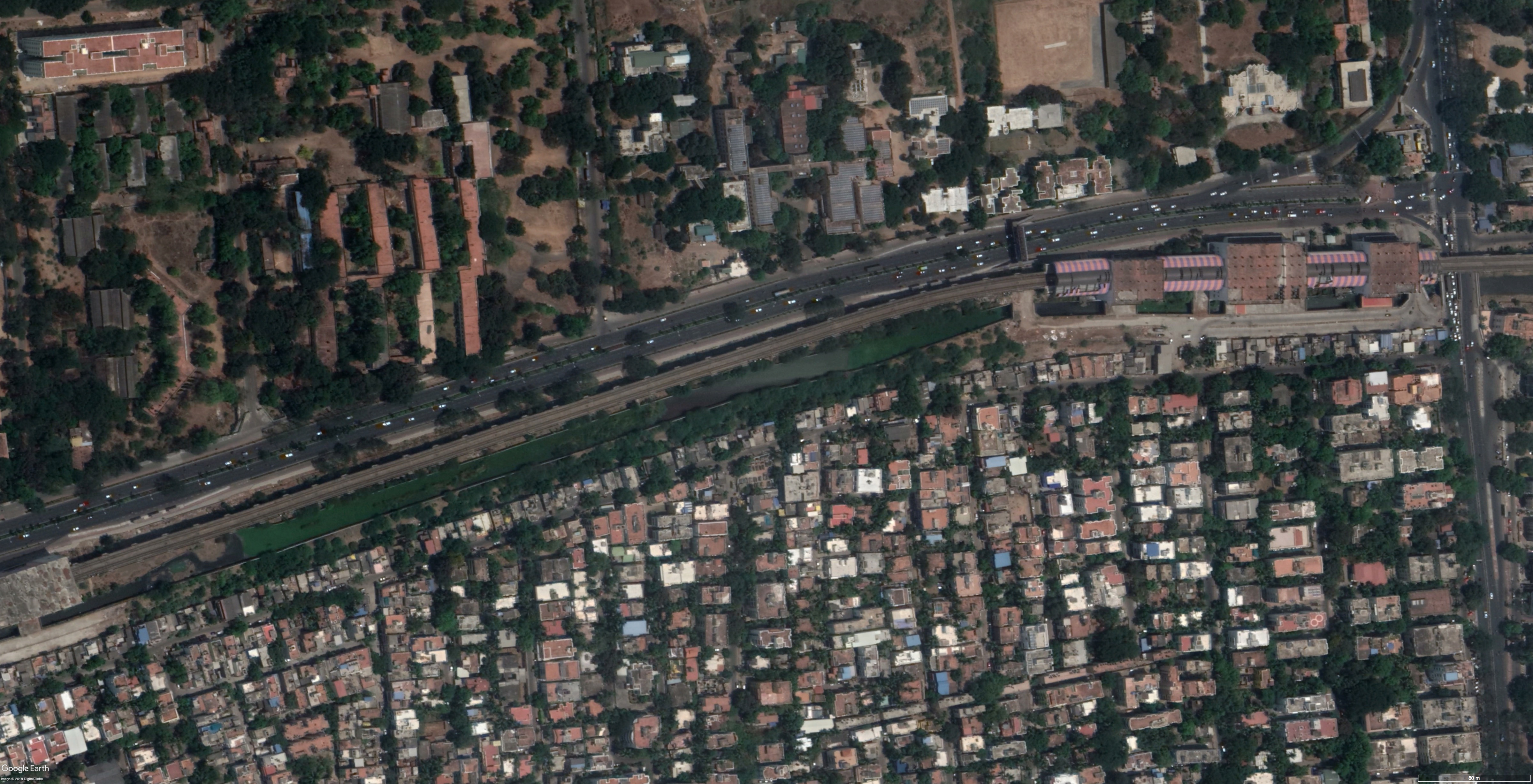
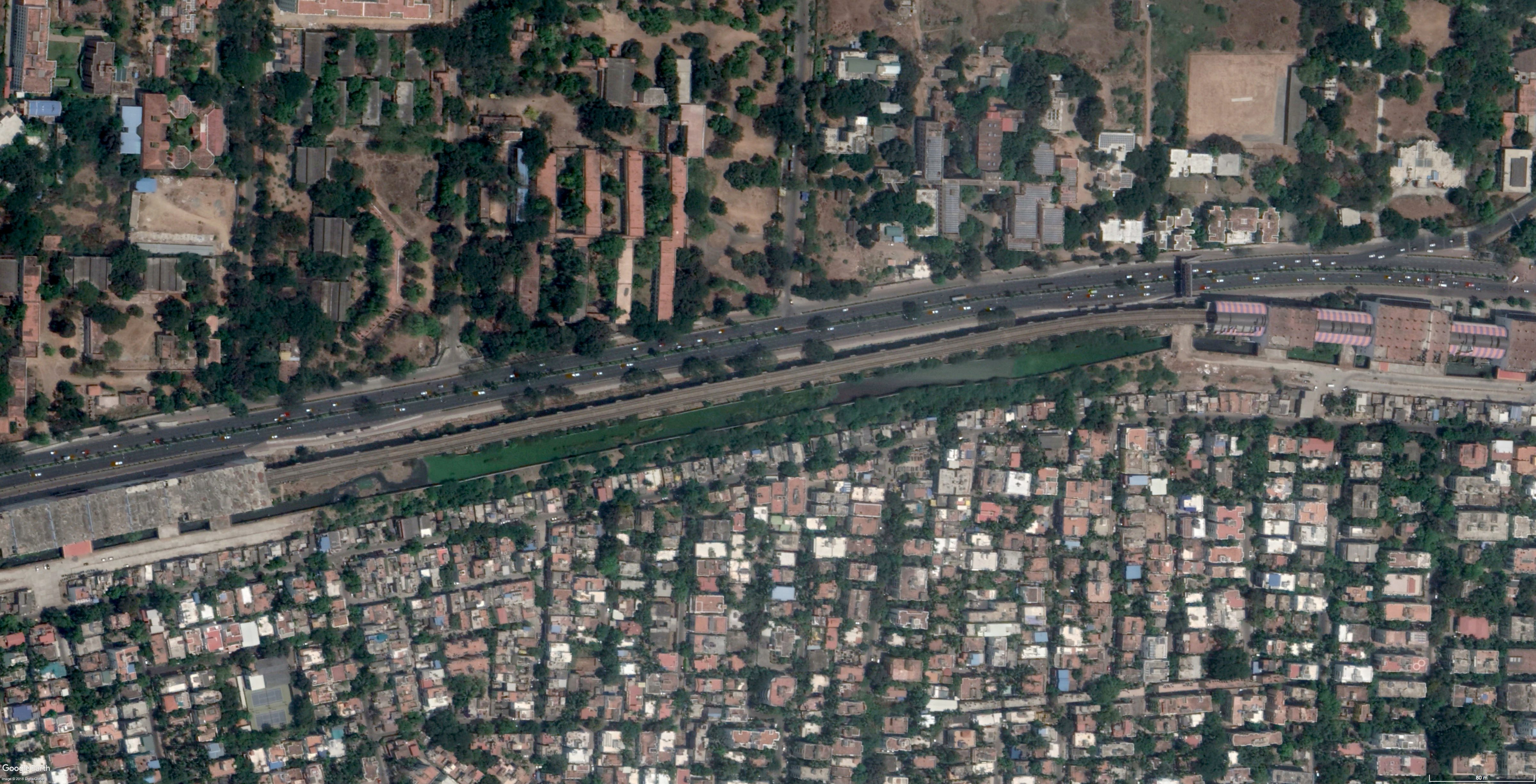
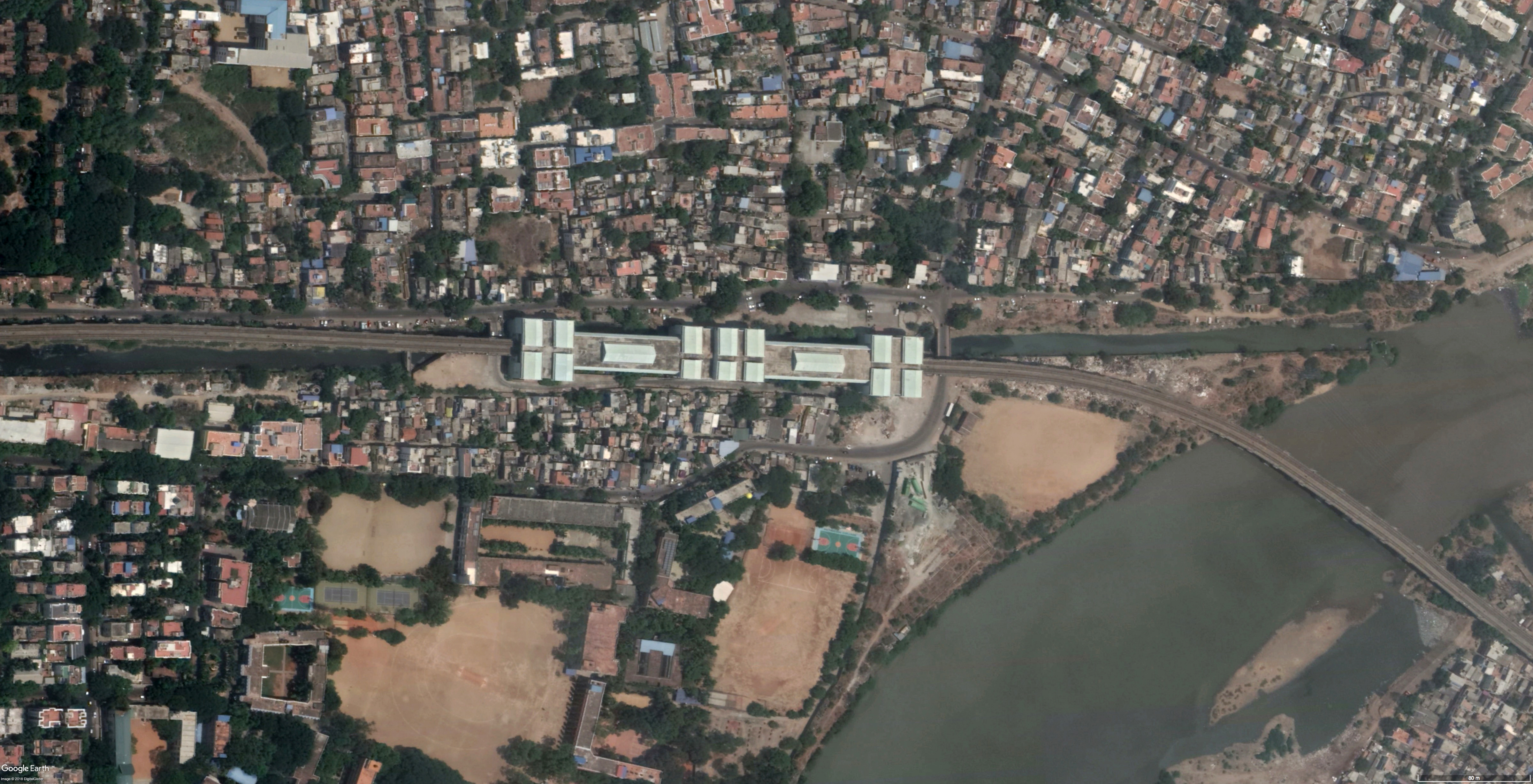

Context
The Buckingham Canal is a manmade saltwater navigation canal that runs parallel to the Coromandel Coast (Andhra Pradesh and Tamil Nadu) in the north-south direction. The canal forms a part of the National Waterway 4 (NW4) and cuts across the three rivers in Chennai — Kosasthalaiyar, Cooum, and Adyar.
The rejuvenation of the Buckingham canal has been an on-and-off agenda for the Inland Waterways Authority of India. The recent focus is motivated by realisation that the canal has potential in mitigating floodwaters — a frequent occurence in the city.
![]()
The rejuvenation of the Buckingham canal has been an on-and-off agenda for the Inland Waterways Authority of India. The recent focus is motivated by realisation that the canal has potential in mitigating floodwaters — a frequent occurence in the city.

Challenges
Impact of Chennai’s urban development on the canal
Chennai bears on the most severe climate change impacts in India. Recent years have oscillated between periods of floods and droughts — as the city’s stormwater absorption capacities decline owing to extensive construction and development.
Lack of freshwater availability
60% of the households in Chennai depend on private wells for meeting water demands. Monsoon patterns vary and as a result, desalination plants are being planned as a subsitute for falling groundwater levels.
Unregulated urban sprawl
Formal and informal developments encroach lakes and river beds — indicating neglect towards natural ecosystems. The elevated mass-rapid transit system (MRTS) compromises the flow of the canal at several locations.
Inadequate waste infrastructure
The three rivers and the Buckingham canal forms sites for solid waste disposal in the city. The water channels encounter 400-700 sewage outfalls from informal settlements within the city.




Approach
Proposing a people-centered approach
The canal is victim to abundance of problems including solid waste and untreated sewage disposal, encroachments causing an obstructed flow, but mere widening, extension and cleaning efforts won't sustain a sustained revival of the Buckingham canal, if not for recognition from the city and its people.
The project follows a people-centred approach - encouraging urban dwellers to reform their lifestyle while providing opportunities for engagement to participate in the canal's revival.
The proposal focuses on the buffer space between the canal and the city as the area of intervention —aiming to formalize the canal bank and define its relationship with the city.


Design Components
Juxtaposition of service infrastructure and public spaces
City-wide extents of the bank are imagined as a green trail integrating an ecological infrastructure system with aspects of community engagement, waste management and aquatic ecosystems.
Back-of-house infrastructural systems are rather combined with public spaces like parks, demonstration grounds and cultural spaces to inherently promote cognisance of resource usage and responsible waste disposal. The design forms opportunities for engagement with local social organizations like Nizhal, SankalpTaru and Chennai Green Commune in education, plantation drives, urban farming and community composting.
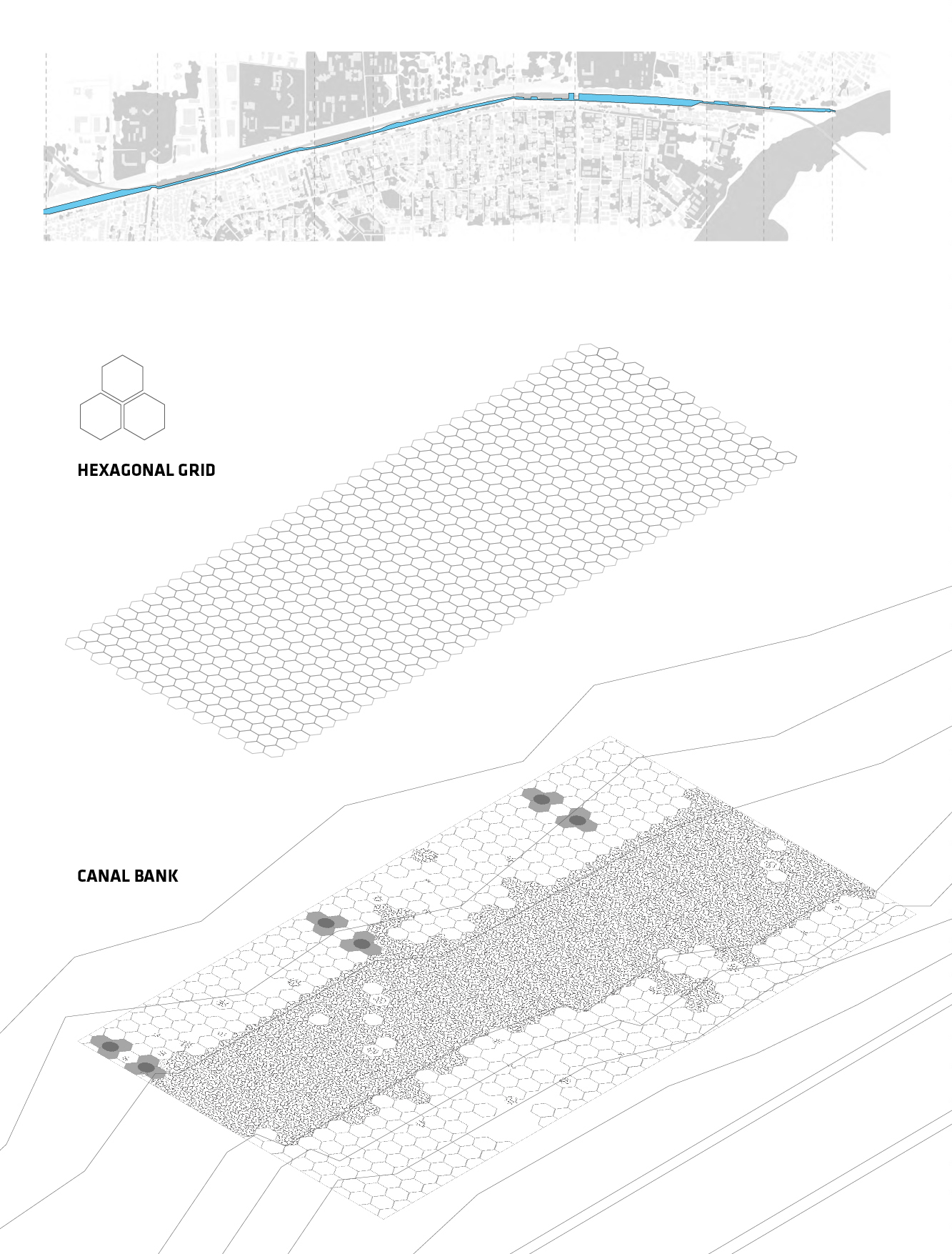
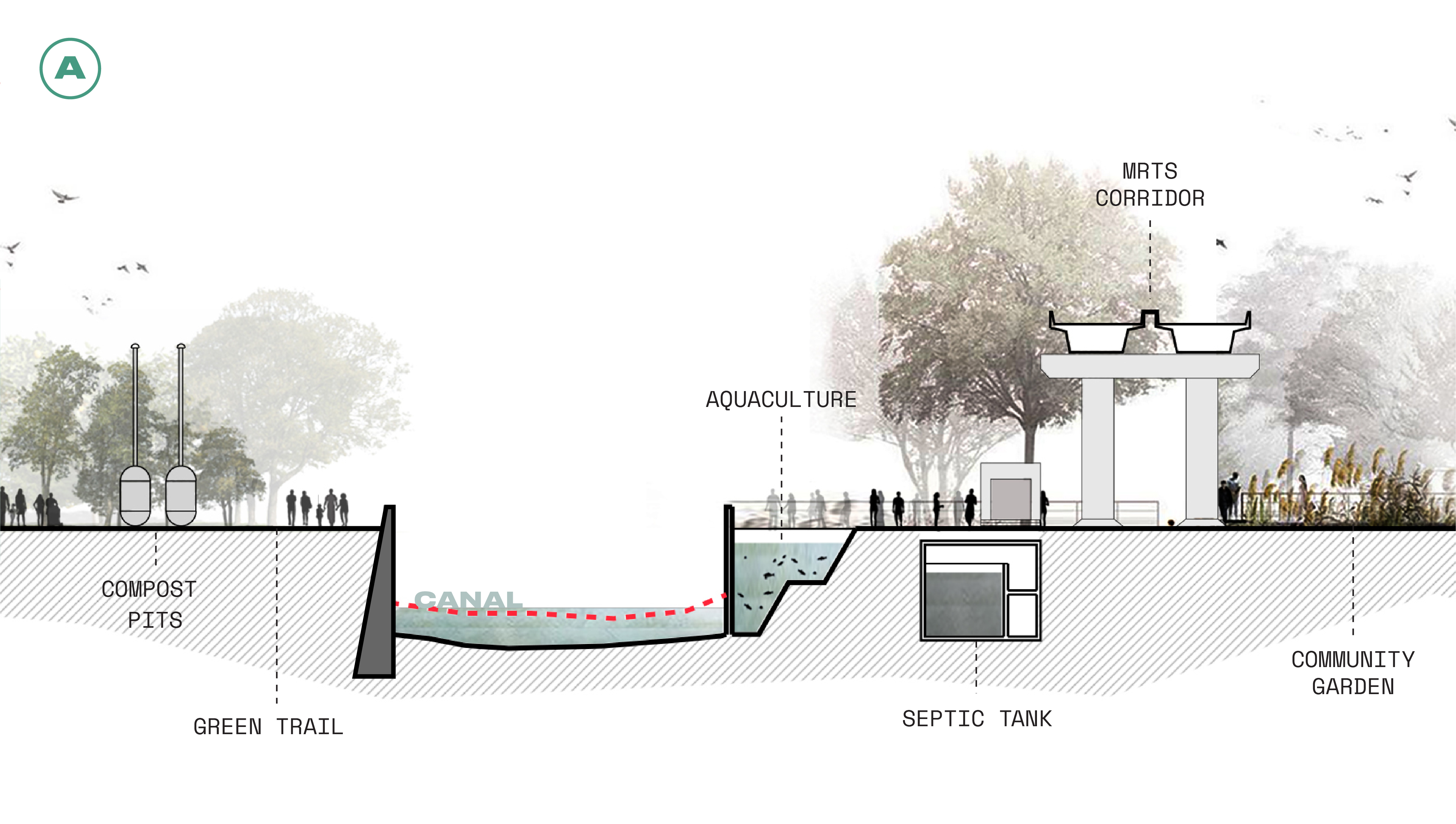
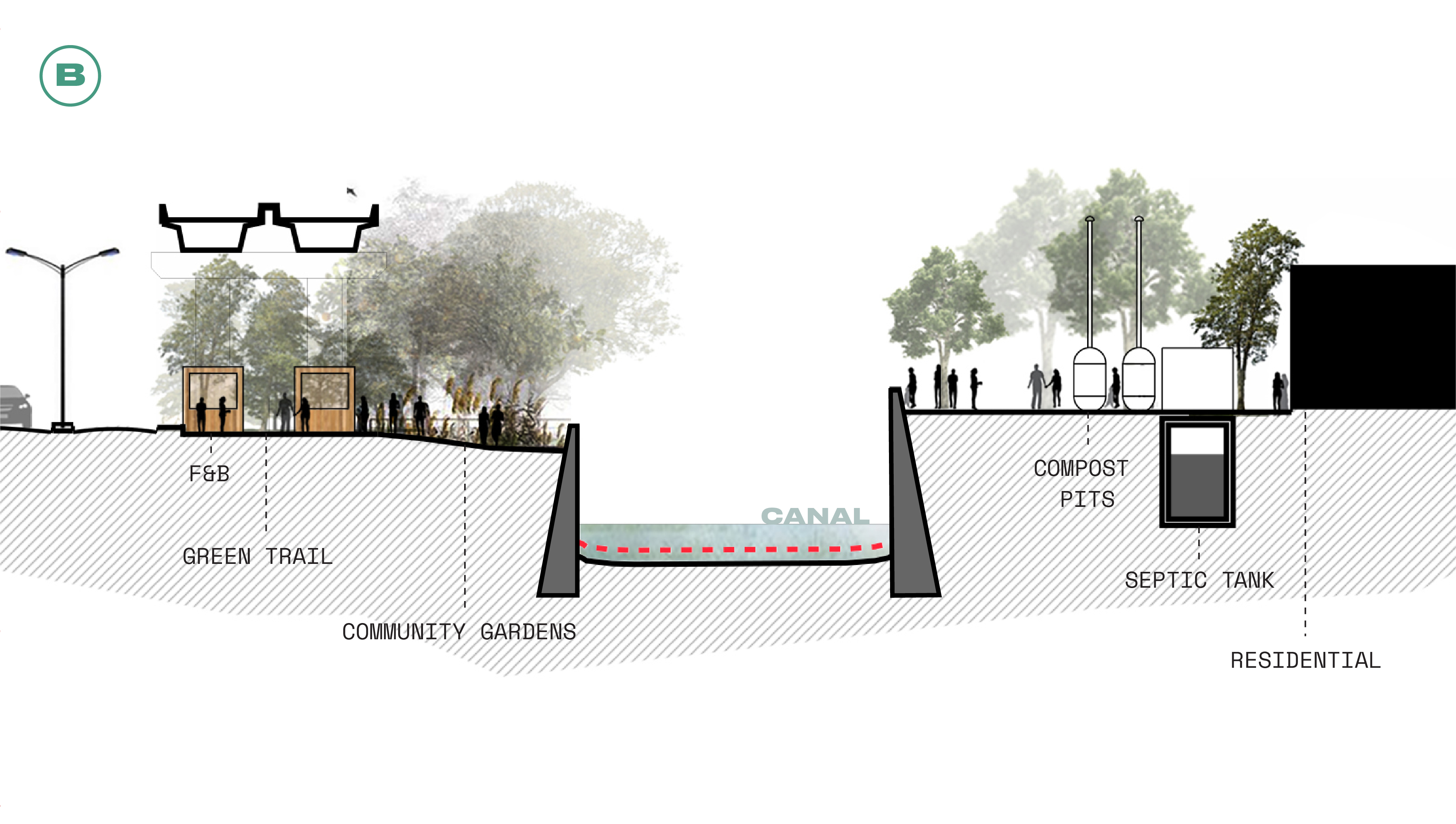

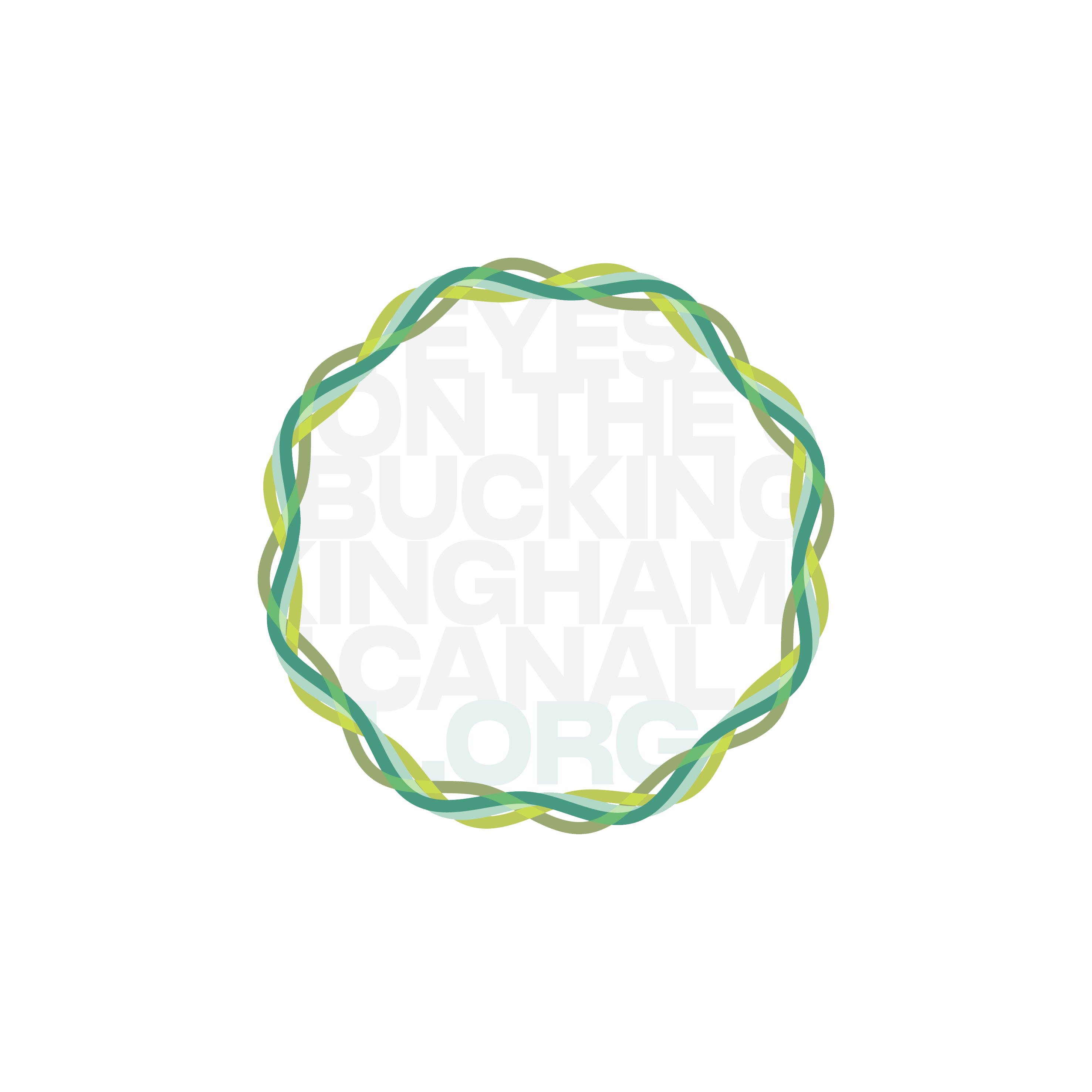
A parent foundation is envisioned to bring together representatives from the city, government authorities and environmental organisations to coordinate action on the canal banks.
Conclusion
Ending remarks
While Chennai struggles to cope with frequent floods and growing demands of the city, it is critical that city dwellers understand the resources and infrastructure they depend upon - how their waste is treated, where their water is sourced from.
Chennai's successful rainwater harvesting drive from 2003 serves as an important case of study demonstrating the power of coordinated action and awareness-building. Love from the city is critical to reverse perception of the canal as a liability to an active, thriving resource.